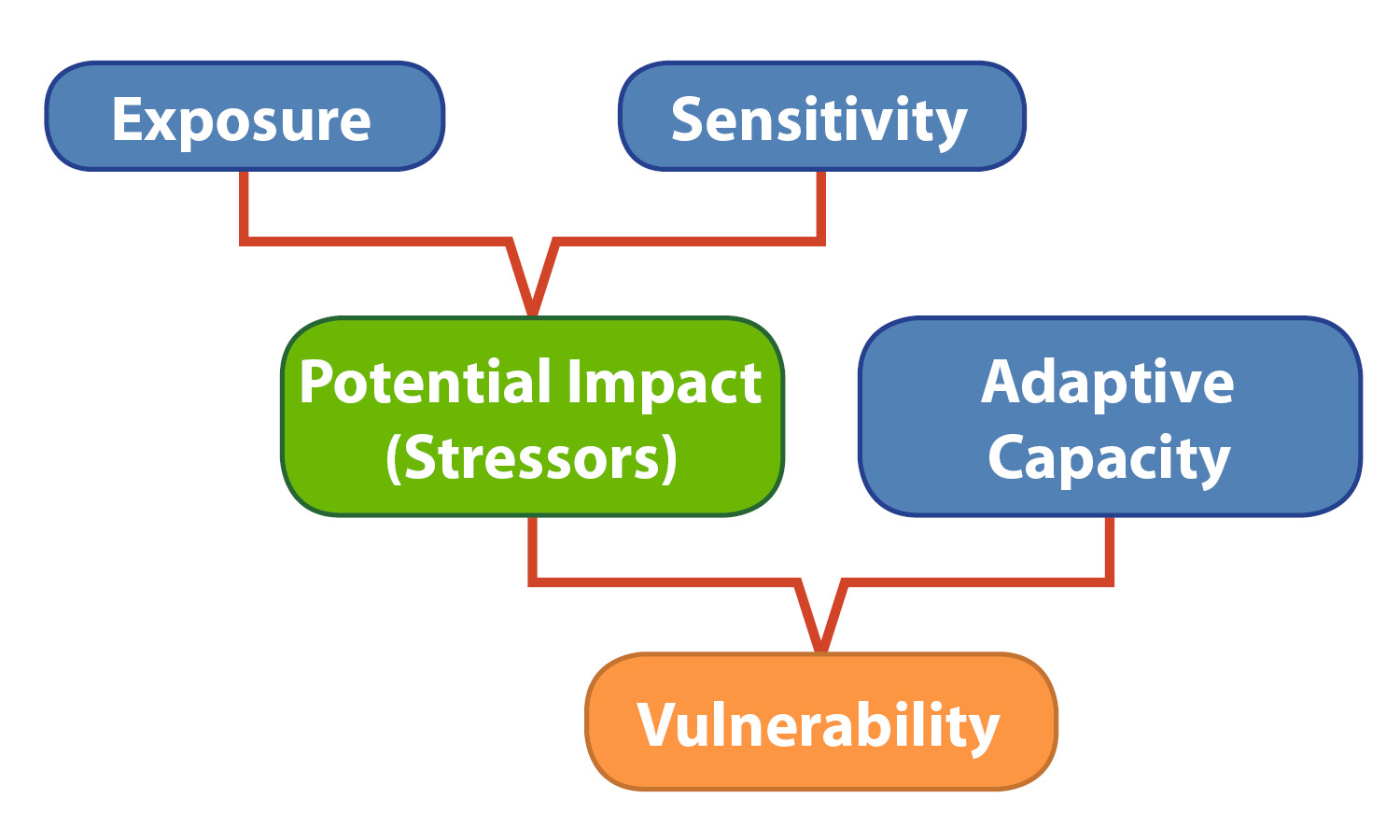Types of Climate Change Assessments
Climate change impact assessments identify and quantify the expected impacts of climate change. These assessments synthesize the current scientific knowledge of the expected effects of climate change on a focus area, such as a resource, economic sector, landscape, or region, for decades to centuries into the future.
Vulnerability assessments go beyond impact assessments to determine a system’s sensitivity and ability to adapt to climate change, and may be used in place of or in addition to climate change impact assessments. Vulnerability is defined as the degree to which a human or natural system is susceptible to, and unable to cope with, the adverse effects of climate change, including associated climate variability and extremes.
Natural resource assessments generally describe the current condition of specific natural resources, and assess factors that are affecting the resource, with the goal of providing timely, relevant, and accessible information for decision makers and policy makers.
In addition, some resource assessments may also quantify how those factors will affect the resource into the future. These assessments are often part of a planning process where management for the next several years is to be determined. Climate change is now an additional dimension that is being included in many natural resource assessments, such as the Forest Service’s Resource Planning Act (RPA) Assessments and the Ecoregional Assessments prepared by the Bureau of Land Management.
Vulnerability
Vulnerability is a function of exposure, sensitivity, and adaptive capacity.
Sensitivity involves environmental thresholds, dependence on other species, interaction with other species, disturbances, specialized habits of particular organisms, and other environmental stressors.
Exposure is made up of primary factors (e.g. temperature, precipitation), secondary factors (e.g. hydrology, sea level rise,vegetation changes), and non-climate stressors (e.g. development, invasive species).
Adaptive Capacity includes plasticity, dispersal abilities, evolutionary potential, and landscape permeability.

What is the scope?
This can be anything from evaluating a few resources to assessing a wide variety of species and ecosystems. The more detailed the assessment, the higher the cost and time commitment involved.
It’s important to identify the scope that bests suits the management questions of interest.
What is the geographic scale?
The scale could be a small area, an entire state, or even a larger region. It’s important to determine what scale is appropriate for informing management decisions.
Who is involved
Assessments can involve a small group of scientists and managers, or they can be larger, more comprehensive groups including stakeholders, agencies, and many other partners. It’s important to include a team of experts with a range of disciplines relevant to the scope of the assessment.
What type of modeling?
This can be as simple as doing a literature review to learn about past and future climates, or it can involve working with experts to evaluate many different models and scenarios. It’s important to have an understanding of changes in the distant and recent past, as well as a range of projected future changes.
A vulnerability assessment is not an endpoint, but a source of information to incorporate into planning and decision-making.
Visit www.fs.usda.gov/ccrc for tools, research, and other resources to assist with decision making.
